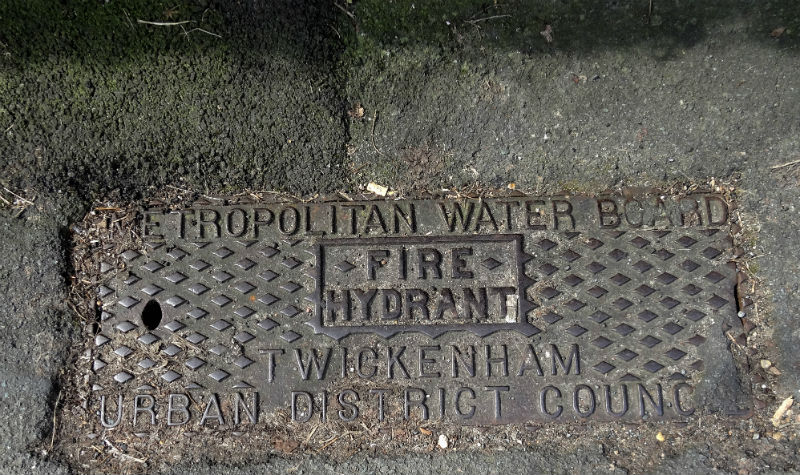
Transcript:
Along with the other regional water companies in England and Wales, Thames Water was privatised in the late 1980s. These privatisations were driven by the then Conservative Government in order to:
- increase competition and widen public choice of water supplier;
- increase efficiency, thus leading to benefits for consumers;
- and to increase private investment in Britain’s aging water supply infrastructure, and thus reduce state expenditure.
Following privatisation, in 1989, Thames Water Utilities Limited (TWUL) was listed on the London Stock Exchange and owned by its various individual and corporate shareholders. In 2001, the German utilities firm RWE purchased Thames Water, only for a Macquarie Bank-led investment consortium to take over ownership, in 2006.
In that same year, the financialisation of Thames Water began.... Financialisation, as practiced by a corporation, describes a process in which making profits from financial instruments,such as the selling of bonds,grows more influential as a way of making profit than does trading in real products. In this context, in 2006, the investment consortium introduced a new ownership structure, and a new funding model, permitting the wholesale securitisation of Thames Water. Securitisation is a tool in the financialisation toolbox that saw the borrowing of money against householders’ future water bills, as a way of creating a ‘human revenue stream’, at the cost of incurring higher debts for Thames Water Utilities Limited.
The financial engineering, at the heart of this model, re-engineered the supply of water to a captive audience, for financial gain. The Thames Water customer after all has no choice but to use the services of Thames Water, because privatisation passed a publicly owned monopoly into private hands.
The question is: Who benefits from the financialisation of a privatised public utility? Well, with this in mind, let's take a look at key moments in the development of the financialisation process.
The acquisition by the investment consortium of Thames Water in 2006 saw the establishment of a holding company structure, what is often termed a 'wedding cake' of ownership. This included Thames Water Utilities Limited, near the bottom, a chain of three companies above it, and then a nondescript company called Kemble Water Holdings Limited near the top. And above all this, are the owners: the investment consortium of shareholders.
Of course, the sector has a government regulator – the Water Services Regulation Authority (OFWAT) - but OFWAT only regulates Thames Water Utilities Limited, a small part of the whole corporate structure .... as you can see. Thames Water Utilities Limited is effectively ‘ring fenced’ for regulatory purposes: what goes on within the ring fence is of concern to OFWAT; what goes on outside is not.
In 2007, Macquarie organised the securitisation of Thames Water Utilities Holdings Limited. Raising (or leveraging) debt through securitisation enabled the company´s projected revenue streams, in the form of future water bills paid by Thames Water’s customers, to be packaged together, and for bonds to be issued against these revenue streams and then sold to investors. All this with the expectation that projected revenue streams would maintain their value. The bonds bought by investors were ‘backed’ by projected payments from Thames Water’s customers.
This particular financial engineering was used by the investment consortium owners of Thames Water to simplify its capital structure - that is, the mix and range of debt and equity used to acquire Thames Water from RWE - and to reduce its funding costs - the interest rate on this range of debt - by transferring all of the existing debt at that time to Thames Water Utilities Limited, the regulated, ‘ring fenced’, entity.
Thames Water Utilities Limited became increasingly indebted. Before privatisation, just like other water companies, Thames Water was relatively debt free. In 1990/91, Thames Water’s leveraged debt was just 7%. Over the period 2003–2011 this figure rose from 55% to 82%. In the five years to 2012, the debt rose from £3.2bn to £7.8bn -, ... but the investment consortium gained access to large sums of capital. In this case, around £4.6bn.
The securitisation and future financing of Thames Water also involved the last layer of the wedding cake holding structure: Thames Water Utilities Finance and Thames Water Utility Caymans. Together these companies enabled the financing practices described above.
The employment of a company registered in the Caymans is by no means by accident - the Cayman Islands, as you’ll recognise, is an ‘offshore’ financial centre. Thames Water Utility Caymans thus protects investors from having to pay tax on either interest payments or on any gains made when selling the bonds.
The organisation of wholesale securitisation and indeed subsequent financing involves an array of intermediaries from financial advisors and legal specialists to rating agencies, each involved in their various capacities as specialists in raising finance, assessing risks and ensuring that the whole structure holds together legally. But this is done for a fee and the fees paid come from household water bills. In addition, each layer of the wedding cake holding structure also charges further management fees.
One further attraction of this style of financing is that it facilitates ‘intra-company’ loans, in which one part of the corporate structure lends money to another part of it. The key attraction of such practices is that the rates charged for such loans are then used to lessen the amount of taxable profits.
Whilst the overall aim of the securitisation above was to reduce the cost of capital to Thames Water – since, after all, managing debt in the form of securitised bonds is cheaper than raising money through equity - and thus, supposedly, to pass on these savings as benefits to the customers of this privately owned utility, the actual benefits of the process have not been at all clear. Tax efficiencies supposedly achieved as a result of the financing techniques employed, and the restructuring of Thames Water’s debt at lower interest rates could have been passed on to the customers in the form of lower bills. Yet, what seems far clearer is that leveraging debt was used instead to pay higher dividends to investors and to pay-off interest on intra-company and external loans, including those used to initially purchase the company.
Indeed, Thames Water has been paying out in dividends far more than it has actually earned from its cash flows. Over the same five period up to 2012, when debts were continuing to increase, the total dividends paid out to investors added up to £1.8bn. The use of leveraged debt to pay dividend payments is a way of making use of future income streams for the benefit of investors rather than for customers.
As might be guessed, the growing complexity of the ownership structure makes it difficult for the regulator, OFWAT, to judge the implications of the structure’s financing in terms of the distribution of risks, and public versus private gains.
If we look again at the ownership structure we see that it is, in effect, divided in two: the ‘ring fenced’ entity and object of the regulator’s gaze, and the larger part of the wedding cake structure which is outside the ring-fence. The point to note is that Thames Water Utilities Limited is required to prepare one set of accounts, the regulatory accounts, whilst a second set of accounts, the statutory accounts, are prepared for the company as a whole. Only the statutory accounts tell the whole story. The regulatory accounts are presented to OFWAT; the statutory accounts are not – they are outside the regulatory ring-fence.
The important point here is that the regulatory accounts do not signal anything alarming about the payment of dividends because this activity takes place beyond the regulator’s reach and is only included in the statutory accounts.
A further issue is that OFWAT is focused on maintaining a ‘market’ attractive to investors. To intervene in this fast changing financing landscape beyond the regulatory ring-fence might endanger the market and the objectives of privatisation by simply putting off private sector investors.
In closing, it is worth asking if the current structure and financing of Thames Water is an inevitable outcome of privatisation.
It would be fair to say that in a very real sense the processes and practices associated with the financialisation of Thames Water were not on the radar, as it were, at the time of drawing up plans for privatisation. The financing techniques outlined above outpaced the regulatory regime drawn up at the time of privatisation and arguably were beyond the imagination of those calling for privatisation.
The regulatory frame for the newly privatised water companies did not effectively equip the regulators with the means to monitor and intervene in the financial practices put to work in financialising Thames Water; the regulatory body, OFWAT, was effectively hemmed in by a regulatory ring fence too tightly drawn.
What the regulator has not been able to do in any serious way is to challenge whether the goal to place the customer centre stage through privatisation has been side-lined in favour of financing techniques that see value 'created' but then siphoned off and distributed to a panoply of international investors rather than reinvested via retained earnings to improve and upgrade Thames Water's infrastructure.
Conclusions
Have the goals of privatisation been reached in the case of water privatization?
Increased competition and widened public choice of water supplier?
- No, the transfer has not brought with it greater competition in the supply of water and sewage treatment.
- Citizens, who previously understood that access to water was a right, have seen themselves turned into ‘customers’ who have very limited choice in choosing a water supplier.
- Privatisation converted a publicly owned monopoly into a privately owned monopoly.
Increased service efficiency leading to benefits for consumers?
- Arguably not. In terms of Thames Water, efficiency benefits gained through restructuring and securitization have apparently tended to go to investors rather than customers.
- For the privatised sector as a whole, according to the House of Commons Committee of Public Accounts, water bills have increased 40% over the rate of inflation since privatisation;
- assumed efficiency savings, reflected in household water bills, fell by nearly 75% between the periods 2000-2005 and 2010-2015;
- and water companies in the sector made windfall gains of at least £1.2 billion between 2010 and 2015 as a results of bills being higher than necessary; these were windfall gains which, despite the regulatory activities of Ofwat, have not been “shared … to ensure customers get a fair deal”.
Increased private investment in key infrastructure and thus reduced state expenditure?
- No. Privatisation, mediated through the practices of financialisation, has witnessed the extraction of value from Thames Water in the form of dividend payments, management fees and interest payments, rather than enabling the creation of value for investment. It has become such a good earner for investors that Thames Water has had to ask the British Government for additional funds to help it construct a cross-Thames sewage pipeline. If a larger share of Thames Water’s profits had been retained by the company rather than distributed as dividends, this situation arguably would not have arisen.





Rate and Review
Rate this article
Review this article
Log into OpenLearn to leave reviews and join in the conversation.
Article reviews
Thanks for this mine of informations !
I couldn't imagine that was even possible to do a business plan like privatising waters...
I will follow the case (I'm from Belgium, here it's public).